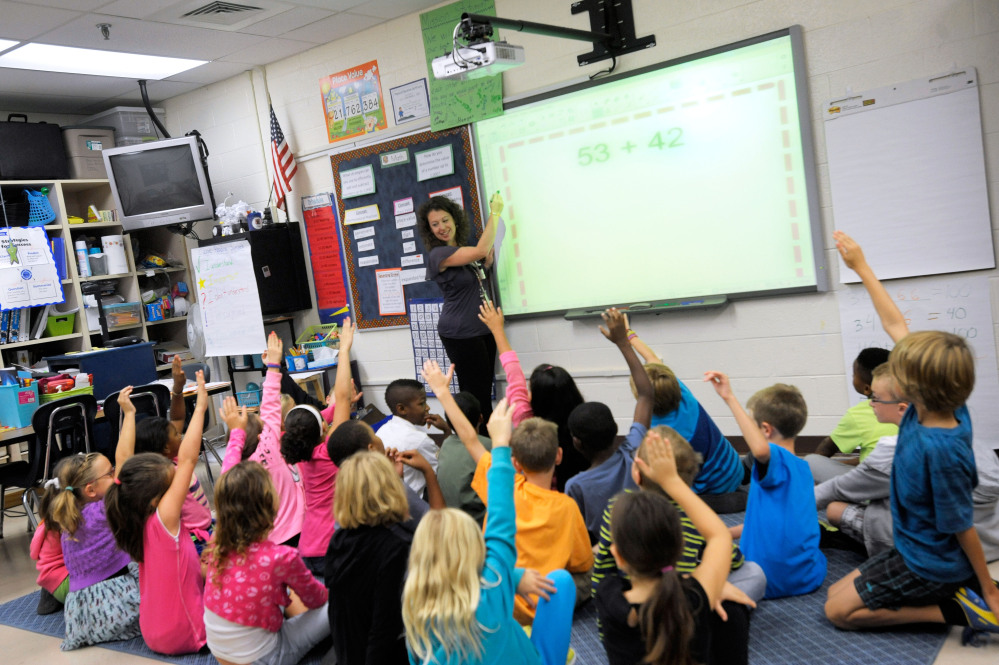WASHINGTON — Sometime in elementary school, you quit counting your fingers and just knew the answer. Now scientists have put youngsters into brain scanners to find out why, and watched how the brain reorganizes itself as kids learn math.
The take-home advice: drilling your kids on simple addition and multiplication may pay off.
“Experience really does matter,” said Dr. Kathy Mann Koepke of the National Institutes of Health, which funded the research.
Healthy children start making that switch between counting to what’s called fact retrieval when they’re 8 to 9 years old, when they’re still working on fundamental addition and subtraction. How well kids make that shift to memory-based problem-solving is known to predict their ultimate math achievement.
Those who fall behind “are impairing or slowing down their math learning later on,” Mann Koepke said.
But why do some kids make the transition easier than others?
To start finding out, Stanford University researchers first peeked into the brains of 28 children as they solved a series of simple addition problems inside a brain-scanning MRI machine.
The 7- to 9-year-olds saw a calculation – three plus four equals seven, for example – flash on a screen and pushed a button to say if the answer was right or wrong. Scientists recorded how quickly they responded and what regions of their brain became active as they did.
In a separate session, they also tested the kids face to face, watching if they moved their lips or counted on their fingers, for comparison with the brain data.
The children were tested twice, roughly a year apart. As the kids got older, their answers relied more on memory and became faster and more accurate, and it showed in the brain. There was less activity in the prefrontal and parietal regions associated with counting and more in the brain’s memory center, the hippocampus, the researchers reported Sunday in Nature Neuroscience.
The hippocampus is sort of like a relay station where new memories come in – short-term working memory – and then can be sent elsewhere for longer-term storage and retrieval. Those hippocampal connections increased with the kids’ math performance.
“The stronger the connections, the greater each individual’s ability to retrieve facts from memory,” said Dr. Vinod Menon, a psychiatry professor at Stanford and the study’s senior author.
Next, Menon’s team put 20 adolescents and 20 adults into the MRI machines and gave them the same simple addition problems.
It turns out that adults don’t use their memory-crunching hippocampus in the same way. Instead of using a lot of effort, retrieving six plus four equals 10 from long-term storage was almost automatic, Menon said.
In other words, over time the brain became increasingly efficient at retrieving facts. Think of it like a bumpy, grassy field, NIH’s Mann Koepke said. Walk over the same spot enough and a smooth, grass-free path forms, making it easier to get from start to end.
If your brain doesn’t have to work as hard on simple math, it has more working memory free to process the teacher’s brand-new lesson on more complex math.
“The study provides new evidence that this experience with math actually changes the hippocampal patterns, or the connections. They become more stable with skill development,” she said. “So learning your addition and multiplication tables and having them in rote memory helps.”
Quiz your child in different orders, she advised – nine times three and then 10 times nine – to make sure they really remember and didn’t have to think it through.
While the study focuses on math, Mann Koepke said cognitive development in general probably works the same way. Kids who match sounds to letters earlier learn to read faster.
Menon said the next step is to study what goes wrong with this system in children with math learning disabilities, so that scientists might try new strategies to help them learn.
Send questions/comments to the editors.


